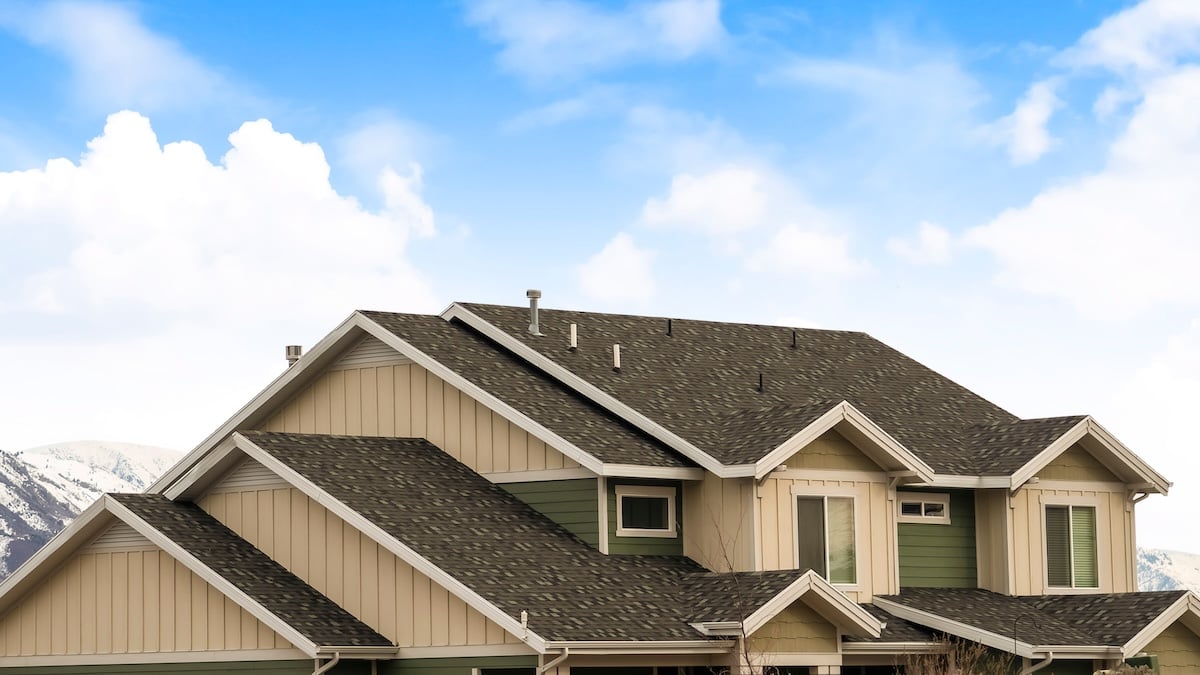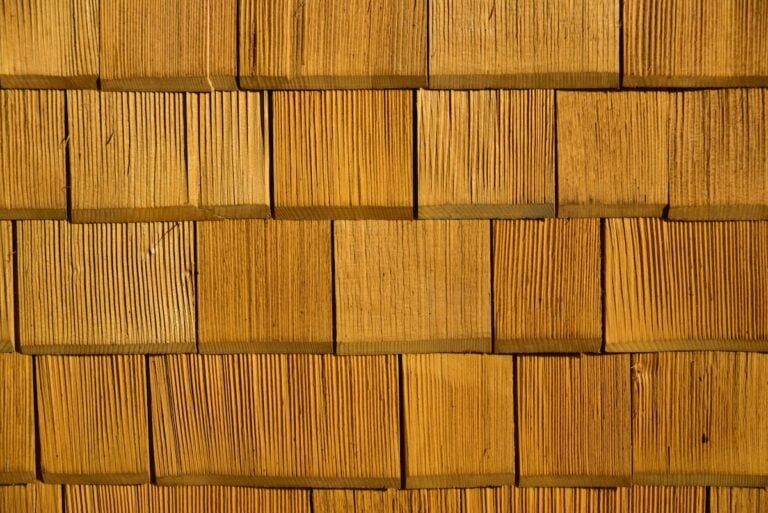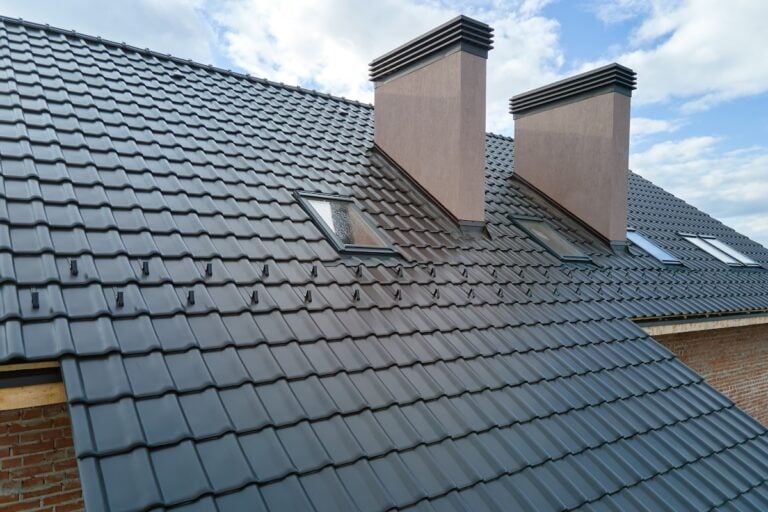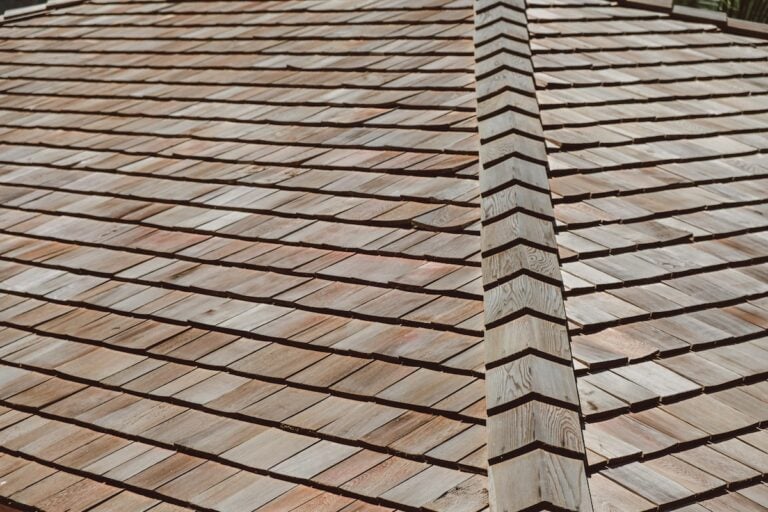A pitched roof is any roof with a sloped surface designed to shed water efficiently, making it one of the most common and effective roofing styles in residential construction. Whether you’re building a new home or considering a roof replacement, understanding the pros and cons of pitched roofs can help you make informed decisions.
- Great for weather resistance: Sloped surfaces allow rain, snow, and debris to run off easily.
- Popular architectural appeal: Pitched roofs come in a variety of shapes to suit different home styles.
- Long-lasting performance: Properly installed pitched roofs tend to outlast flat or low-slope systems.
In this post, we’ll break down how pitched roofs work, explore the different styles available, and explain the practical benefits for homeowners.
👉 What Defines a Pitched Roof?
A pitched roof features two or more slopes that rise to a peak or ridge, creating a triangular shape. The angle of the slope, also known as the pitch, is usually measured in inches of vertical rise per 12 inches of horizontal run.
For example, a 6/12 pitch means the roof rises six inches for every twelve inches of horizontal distance. The steeper the pitch, the faster water and snow slide off, making it a good fit for regions with heavy precipitation.
This slope not only serves a functional purpose but also plays a big role in the overall appearance and feel of your home.

✅ 6 Common Pitched Roof Styles
There are several types of pitched roofs, each with its own structural design and aesthetic value. Here are six of the most popular styles seen on homes across the U.S.
1. Gable Roof
- Design: Two sloping sides that meet at a central ridge, forming a triangle
- Benefits: Simple to build, cost-effective, and excellent at shedding water
- Best for: Traditional and suburban homes
2. Hip Roof
- Design: Four slopes of equal length that meet at a ridge or point
- Benefits: Strong wind resistance and a symmetrical look
- Best for: Wind-prone areas or homes with wide roof spans
Because hip roofs require more cuts and angles, ensuring your contractor uses the right roof safety equipment is essential during installation.
3. Gambrel Roof
- Design: Two-sided roof with a shallow upper slope and steeper lower slope
- Benefits: Creates usable attic or loft space
- Best for: Barns, farmhouses, and colonial-style homes
4. Mansard Roof
- Design: Four-sided design with two slopes on each side, the lower slope steeper than the upper
- Benefits: Maximizes living space on upper floors
- Best for: French-style architecture or urban homes
5. Saltbox Roof
- Design: Asymmetrical design with one long slope and one short slope
- Benefits: Unique curb appeal and great water drainage
- Best for: Historical or New England-style homes
6. Shed Roof
- Design: Single sloping surface
- Benefits: Minimalist design and easy construction
- Best for: Modern homes or additions
✅ Benefits of a Pitched Roof
Pitched roofs have remained popular for good reason. Their design offers numerous advantages over flat roofing systems, especially for homeowners in climates that experience regular rain or snow.
Excellent Drainage
The angled surface allows water and debris to run off quickly, reducing the risk of pooling and leaks. This makes pitched roofs more reliable over time, especially in storm-prone areas. This makes pitched roofs more reliable over time, especially in storm-prone areas where homeowners often rely on roofing experts in Arlington.
Energy Efficiency
Pitched roofs allow more room for insulation and ventilation, which helps regulate indoor temperatures. When paired with proper attic airflow, they can reduce heating and cooling costs throughout the year.
Longer Lifespan
Thanks to better water runoff and material flexibility, pitched roofs typically last longer than flat roofs. Asphalt shingles on a pitched roof, for instance, can last 20–30 years or more with proper care.
Curb Appeal
Pitched roofs offer architectural variety. From steep gables to subtle slopes, the right pitch can dramatically enhance your home’s appearance and market value.
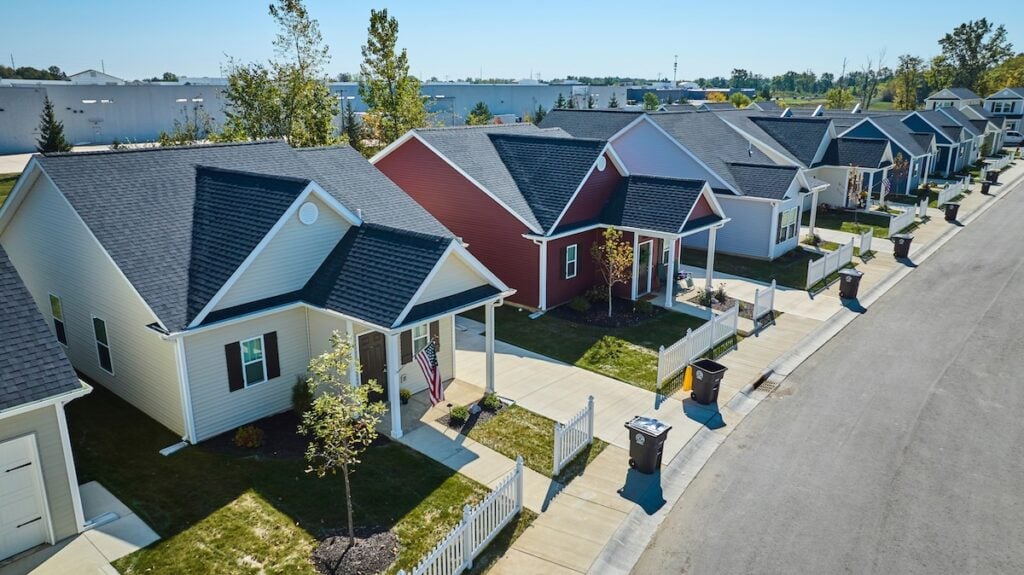
🪵 Pitched Roof Materials
Choosing the right roofing material is just as important as the roof shape itself. Fortunately, pitched roofs are compatible with a wide range of materials.
- Asphalt shingles: The most common and affordable choice for pitched roofs. Easy to install and repair.
- Metal roofing: Lightweight, long-lasting, and highly weather-resistant. Excellent for steep or low-pitch applications, especially when installed by metal roofing contractors in Great Falls.
- Slate or synthetic slate: Adds a premium, textured appearance with exceptional durability.
- Clay and concrete tiles: Popular in warmer climates; adds a distinctive aesthetic with fire resistance.
- Wood shakes: Great for rustic or traditional homes, though they require regular maintenance.
Before deciding on a material, consider local weather conditions, roof pitch, weight load, and your desired aesthetic.
📋 Pitched Roof vs. Flat Roof
Not sure whether a pitched roof is right for you? Here’s how it compares to a flat roof in key categories.
Durability and Maintenance
Pitched roofs are better at preventing leaks, especially over the long term. Flat roofs often require more frequent maintenance and sealing to avoid water pooling.
Cost of Installation
Flat roofs are often cheaper to install upfront due to simpler construction. However, pitched roofs generally offer a better long-term return on investment thanks to fewer repairs and longer material lifespan. For homeowners who work with trusted Alexandria roofing services.
Design Versatility
Flat roofs allow for rooftop patios or HVAC installations, but pitched roofs provide more room for attic storage, vaulted ceilings, or energy-efficient venting.
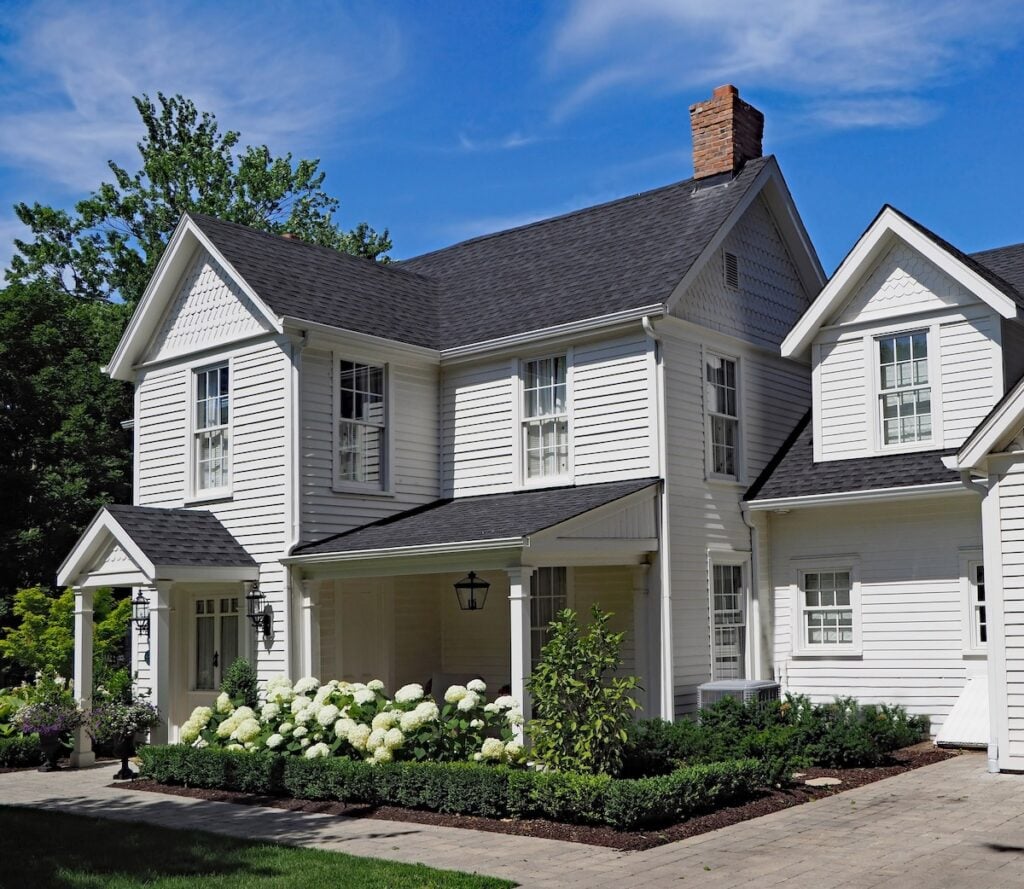
🤔 When to Consider a Roof Pitch Adjustment
If you’re planning a full roof replacement or second-story addition, now is the time to consider your roof pitch. Raising or altering the slope can improve drainage, solve ventilation issues, or even modernize the look of your home.
Springfield Roofing & Sheet Metal can evaluate your current structure and let you know what’s possible within your framing and budget.
🏠 Is a Pitched Roof Right for Your Home?
A pitched roof is a timeless and functional design that offers homeowners better protection, more options, and long-lasting performance. Whether you’re drawn to its clean lines, superior drainage, or classic curb appeal, the pitched roof is a reliable choice for homes of all styles.
At Springfield Roofing & Sheet Metal, we’ve installed and repaired every kind of pitched roof, from gables to gambrels and everything in between. If you’re planning a roof upgrade or need help selecting the best style and material, contact us today! Let’s build a roof that lasts.


